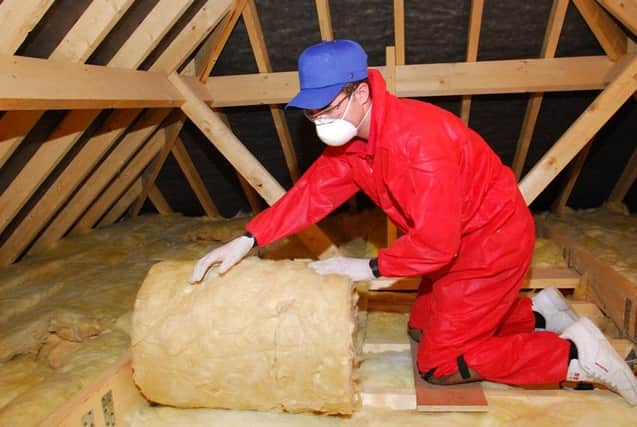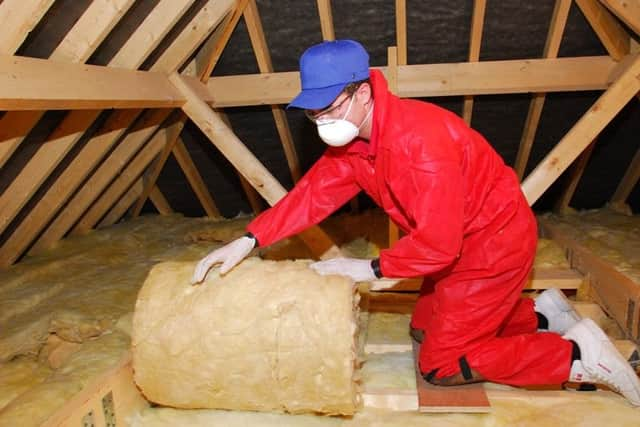How to keep your home warm and your wallet happy


Insulate your loft and walls
Insulating your home can be expensive, but with more than a quarter of heat loss occurring through an uninsulated roof and more than a third through walls, it’s an investment worth considering for the sake of future energy bills. Adding the recommended 270mm of loft insulation could save up to £175 a year. Insulating cavities inside walls could save you £135 annually, while if you have solid walls insulating the inside of them could see you £445 a year better off and doing the outside could save £475 a year. There are grants and discounts available to help cover the cost of insulation – find out if you’re eligible by calling Home Energy Scotland free on 0808 808 2282. Or you could go down the DIY route – rolls of foam insulation are inexpensive and effective. Just remember to wear a face mask, goggles and protective clothing if you do it yourself.
Radiator reflectors


One way to stop heat loss from radiators and make them more effective is to place heat-reflective aluminium foil panels behind them. These reflect heat back into the room instead of allowing it to disappear through the wall, and can be bought for less than £5. Radiator covers placed over the radiator are a stylish way to stop heat escaping, hide the radiator, and give you extra surface space in the room too. Moving heavy furniture like sofas into the room and away from radiators also makes sure it isn’t blocking the heat.
Thick curtains
Advertisement
Hide AdAdvertisement
Hide AdHanging thick curtains at your windows is an easy, and relatively cheap, way to keep the heat in, stopping it escaping through the windows. Heavy fabrics like wool and velvet work well, as do those with thermal linings, which can be found for as little as £20. If you want to save even more and you’re handy with a sewing machine you could always line the curtains you already have yourself, using fleece fabric. Hanging a curtain in front of doors that lead outside is another great way to stop draughts.
Let the light in
Make sure you open the curtains or shutters and put the blinds up during the day to let the sunlight in and allow it to heat your rooms – for free, and emission-free. Then close them again when the sun sets to keep all that natural heat in.
Chimney balloon
With so many fireplaces now functioning as nothing more than that all-important period feature/candle display area, a lot of heat is lost through them and a lot of cold air can come down them. If you don’t use your open fire, you can insert a chimney balloon to stop the draught. Costing as little as £20, they are placed inside the chimney, out of sight, and then inflated till the gap is plugged. Just be sure to remember to remove it if you do decide to start a fire...
Draught excluders
Remember that fabric sausage dog your granny had nestled at the bottom of her front door? She knew what she was doing. Draught excluders are a cheap and very effective way of keeping cold air out and hot air in, and can save you around £30 a year on your energy bills. While you might not feel the once-requisite sausage dog is quite your style, the principle remains the same – using draught-proofing materials such as brushes, foams, sealants, rubber and plastic, all available from DIY stores and many of them self-adhesive, you can plug the gaps round doors, windows and skirting boards.
Cover the floorboards
Advertisement
Hide AdAdvertisement
Hide AdUncovered floors contribute up to 10 per cent of the heat lost in a house – and as well as keeping the heat in and stopping the cold creeping up from the ground below, carpets keep your feet warm too. If you have wooden floors and don’t fancy carpets, or can’t budget for them, rugs are just as effective and don’t have to cost much. Silicone-based fillers that be squirted into cracks between floorboards or at the skirting are cheap and easy to use yourself too.
Get your hot water tank a jacket
Buying a jacket to keep your hot water tank toasty will save you up to £40 a year, and keep the water hot for longer, using less energy to heat it – looking a bit like a puffa jacket, you can pick them up in any DIY store from about £15. Insulating pipes is just as cheap and easy. Pre-formed foam pipe insulation can be placed around accessible pipes, will help keep water warmer longer and come out at the right temperature faster, and will save you around £15 a year on your bills too.
Leave the doors open
But only the right ones... Keeping the doors to the rooms you are using closed keeps the heat in and the draught out, but there are exceptions. Leaving both the oven door and the kitchen door open after cooking makes double use of the energy you’ve used by giving your home an extra heat, particularly in smaller houses or flats, while keeping the bathroom door open when you’re running a bath or the shower lets the hot steam circulate.
Dress the part
And finally, it may sound obvious but it’s the cheapest and easiest way to keep yourself warm – dress the part. Sitting in the house with the heating cranked up wearing shorts and a t-shirt makes as much sense as driving with the windows down and the air con on, so layer up before you decide whether you need to switch the central heating on at all. Lots of layers, wool sweaters and dressing gowns will all help keep your core temperature up, while socks or cosy slippers are perhaps most important of all – if your feet are cold, so are you.
• This article was produced in partnership with the Scottish Government